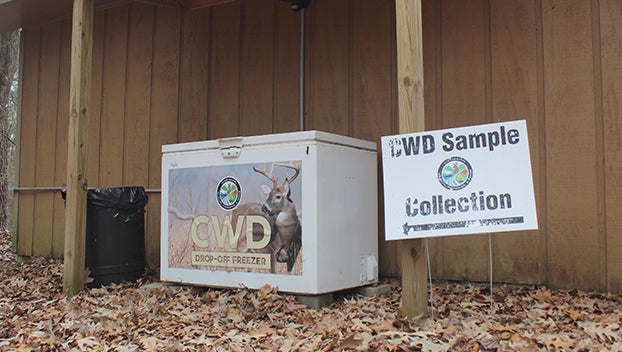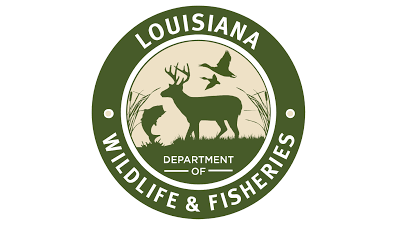A variety of insect pests threaten state pine stands
Published 10:59 am Monday, November 14, 2022
|
Getting your Trinity Audio player ready...
|
MSU Extension Service
STARKVILLE, Miss. — A variety of pests threaten Mississippi forests, presenting a challenge to landowners who lack experience in managing land or even knowing what problems to look for.
Brady Self, a forestry specialist with the Mississippi State University Extension Service, said that good first step is to simply do a walkthrough and look for things out of place.
“Trees die, because everything has an expiration date, so a dead tree here and there isn’t necessarily a cause for alarm,” Self said. “What you’re looking for are things in groups, like patches of dead or sick trees, and trees with symptoms like a lot of die-back in the crown, observable discolorations to the bark or rot.”
There are many insects that cause these types of problems in Mississippi pine forests.
“Southern pine beetle is the most economically damaging pest we have in Mississippi from a historical perspective, but good management during the 1990s and early 2000s really knocked them back,” Self said. “There are still some flare ups, potentially increasing due to decreased management efforts with depressed timber markets.”
At low population levels, Southern pine beetles attack stressed, damaged or overly stocked stands. But at high-outbreak population levels, these beetles will attack healthy, vigorous pine trees, killing them regardless of their age, health or condition.
“Many landowners have suffered losses ranging from a few trees to entire stands,” Self said.
Southern pine beetles bore through the bark of pine trees and then lay eggs in tunnels. The eggs hatch, and the larvae make winding, s-shaped tunnels — or galleries — through the bark. Additionally, the beetles sometimes carry and introduce blue stain fungi that prevent water and nutrients from moving from the roots through the stem.
The tree is eventually killed by a combination of girdling by gallery construction and blue stain fungi, which collectively block water transport.
Careful monitoring, good forest management and control measures have kept Southern pine beetle populations below outbreak levels in recent years in the state.
“Landowners should know that these beetles are native to Southeastern forests, so they are always around and definitely able to make a comeback at some point,” he said.
Recently, Ips bark beetles have become more problematic than they were historically, likely due to lack of management because of reduced timber prices. These insects can cause a fair amount of mortality at times.
There are three species of Ips bark beetles that occur in Mississippi and the Southeast. These beetles do not appear in defined areas, as do Southern pine beetle infestations.
“Ips tend to cause scattered mortality of only the weakest trees throughout stands,” Self said.
He said these beetles are present throughout most pine stands in the South, and they take advantage of disturbances caused by normal management activities that sometimes wound nearby trees. This includes thinning operations and the slash materials left after routine harvests.
“Ips beetles take advantage of these disturbances to colonize trees wounded during harvest,” Self said. “Minimizing wounding of residual trees and proper slash management following harvest operations are key to reducing subsequent Ips problems.”
Another native pest is the deodar weevil, which has caused a lot of problems in the past but not much lately.
While Southern pine beetles and Ips are small insects, deodar weevils reach about a quarter inch long as adults. They attack a variety of conifers, including loblolly, longleaf, shortleaf and slash pine trees. They spread pitch canker to trees, mostly in the fall when fungus-carrying weevils bore into trees to reproduce.
“Fading crowns in the fall or winter are a common symptom of deodar weevil activity, but this alone does not confirm their presence,” Self said. “The most definitive sign of a deodar infestation is the chip cocoon created by larvae in preparation for their pupation. These chip cocoons are visible as early as February and are usually found on the bottom 10 feet of the main stem.”
Bark on heavily infected deodar-infested trees can slip off, exposing the chip cocoons, or wood splinters circling a small hole.
Prevention is typically the best answer to these insect pest problems.
“Very often, there aren’t many tools available to economically or realistically treat trees once damage is evident, at least from a property-wide standpoint,” Self said. “Often, preventative measures are the best guard against insects and disease pests.”
Ashley Schulz, an assistant professor in the MSU College of Forest Resources and the Forest and Wildlife Research Center, said prevention means keeping tree stands healthy by reducing density through thinning when biologically appropriate. When thinning, be sure to avoid damaging remaining trees. When they are damaged, the stressed trees produce odors that attract beetles.
“Generally, it’s good to thin stands, maintain tree vigor, promote healthy trees that support an array of native predators that can help reduce beetle populations, and make sure not to transport infected trees to reduce spread of these pests and pathogens,” Schulz said.
Some insecticides can be used in certain situations to control specific pine pests, but these are often expensive, and application is difficult.
“If you find that you have a beetle outbreak already occurring on your property, get it assessed by a professional forester and then treat the stand,” she said. “A common solution is to cut the dead, dying, and recently colonized trees and burn them.”
Remove a margin of healthy trees beyond the dead and dying trees to ensure that most of the beetle population is removed and cannot quickly erupt again.
There are other insects and diseases that can affect Mississippi pine trees, but these are the most common. Help in identification and developing a plan of action can come from the Mississippi Forestry Commission area foresters, MSU Extension Service agents and Extension forestry specialists.






